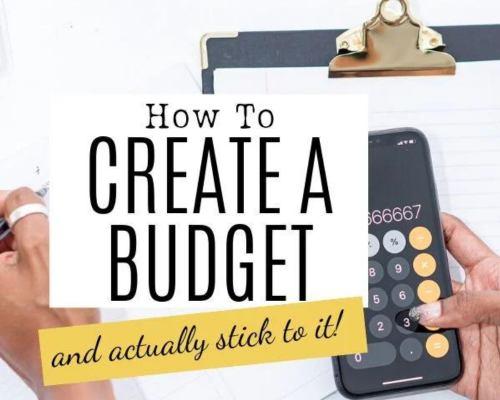
How to Create a Budget and Stick to It: Practical Steps for Financial Success
Creating and sticking to a budget is a cornerstone of financial stability and success. Whether you're aiming to save for a big purchase, pay off debt, or simply manage your day-to-day expenses more effectively, a well-structured budget can guide your financial decisions. This blog post outlines practical steps to set up a budget, track your expenses, and maintain financial discipline.
Why Budgeting is Important
Budgeting helps you understand your financial situation, prioritize spending, and ensure you're living within your means. It can also help you:- Achieve Financial Goals: Whether saving for a vacation, building an emergency fund, or planning for retirement, a budget helps you allocate funds toward your goals.
- Reduce Financial Stress: Knowing where your money goes and having a plan can alleviate the stress associated with financial uncertainty.
- Avoid Debt: By tracking expenses and living within your means, you can avoid accumulating unnecessary debt.
Steps to Create a Budget
- Assess Your Income
- List Your Expenses
- Fixed Expenses: These are regular, unchanging costs like rent or mortgage payments, utilities, insurance premiums, and loan payments.
- Variable Expenses: These costs can fluctuate from month to month, including groceries, entertainment, dining out, and transportation.
- Track Your Spending
- Set Financial Goals
- Allocate Your Income
- 50% for needs (essentials like housing, food, transportation)
- 30% for wants (non-essential but enjoyable expenses)
- 20% for savings and debt repayment
- Build an Emergency Fund
- Review and Adjust Regularly
Tips for Sticking to Your Budget
- Automate Savings and Bill Payments
- Use Budgeting Tools
- Practice Mindful Spending
- Plan for Irregular Expenses
- Stay Motivated
- Seek Support if Needed
Conclusion
Creating and sticking to a budget is a powerful step towards financial stability and success. By understanding your income and expenses, setting clear financial goals, and practicing mindful spending, you can take control of your finances and build a secure future. Remember, the key to successful budgeting is consistency and flexibility—adjust your budget as needed to reflect changes in your life and financial situation.All Categories
Recent Posts
guardianpolicies0 Comments
Preparing for Retirement Essential Financial Steps to Take in Your 40s and 50s
guardianpolicies0 Comments
The Impact of Credit Scores on Insurance Premiums What You Need to Know
guardianpolicies0 Comments




